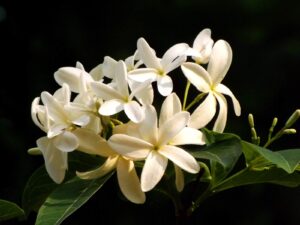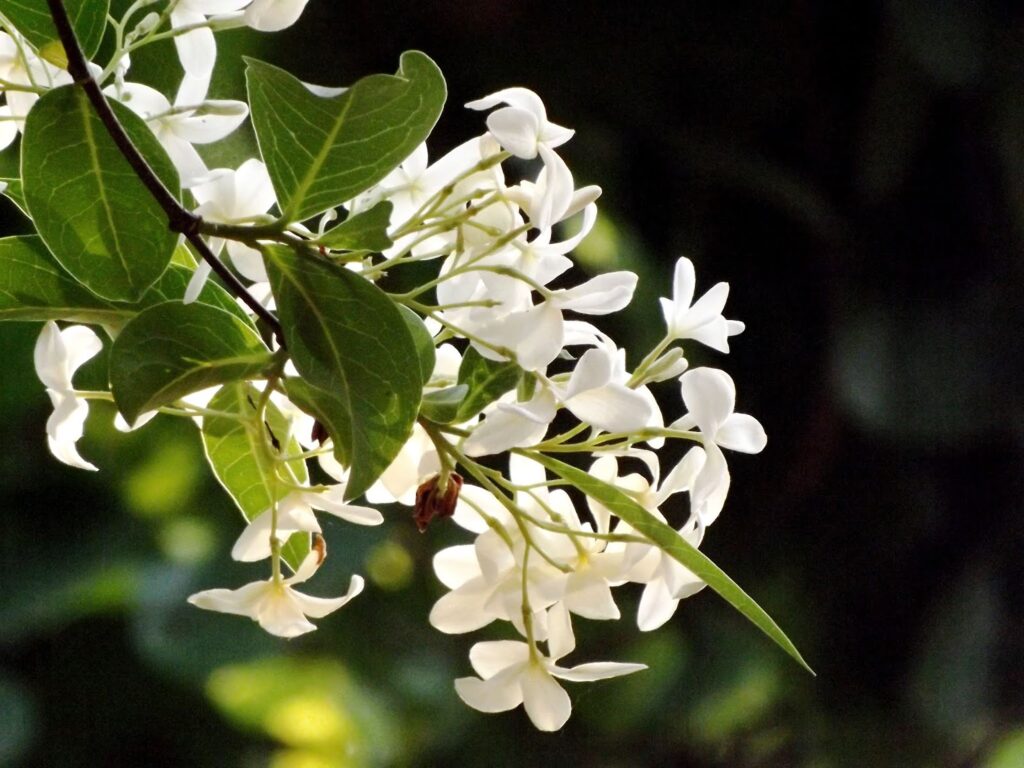Ayurvedic
Kutaja (Holarrhena antidysenterica) Herb Ayurvedic Overview
Kutaja (Holarrhena antidysenterica) is a large shrub or glabrous tree found throughout the deciduous forest areas of India at low elevations. The leaves of kutaja are simple, large, oval-shaped having 10 cm long and 4 to 10 cm broad arranged in reverse directions, and feels membranous.
The flowers are small, white, and arranged in a cluster which looks like a flattened top. The plant is mainly found in tropical and subtropical regions of Asia and Africa. Other than this, the plant is found in Burma, Srilanka, Pakistan, Nepal, and Africa and flowers in the months of May-July. In India, it can be found throughout the country, especially in deciduous forests of tropical Himalayas, at altitudes ranging from 900 to 1250 m.
The plant has many medicinal values as it is rich in antidiarrheal, antidysenteric, anti-amoebic, antibacterial, anthelmintic, astringent properties. The bark of Kutaja (Holarrhena antidysenterica) is used in dyspepsia, piles, colic, diarrhea, indigestion, intestinal infections, flatulence, and as a remedy in diseases of the spleen and skin. It was noticed that boiling the bark of the plant in water and applying it to infected wounds helps in the healing process.
Table of Contents
Scientific Classification of Kutaja (Holarrhena antidysenterica):
- Kingdom: Plantae
- Subkingdom: Tracheobionta
- Superdivision: Spermatophyta
- Division: Magnoliophyta
- Class: Magnoliopsida
- Subclass: Asteridae
- Order: Gentianales
- Family: Apocynaceae
- Genus: Holarrhena
- Species: Holarrhena antidysenterica
Kutaja (Holarrhena antidysenterica) Synonyms:
- English: Tellicherry Bark
- Hindi: Karva Indrajau, Kutaja, Kurchi
- Sanskrit: Indrayava, Kutaja, Sakraparyaaya, Sakraasana, Vatsaka
- Tamil: Kirimllikai, Kutaca-P-Palai, Mlaimllikai
- Telugu: Girimallika, Kodisepala, Kolamukku, Kondamalle, Kutajamu
- Punjabi: Keor, Kewar
- Gujarati: Kadavo Indrajav
Kutaja (Holarrhena antidysenterica) Description:
 a) Macroscopic: The dried stem bark shows small pieces of different sizes and thickness. The Outer surface of kutaja is buff to brownish longitudinally wrinkled and bearing horizontal lenticels, and the inner surface is brownish, rough, and scaly fracture short and granular, taste, acrid and bitter.
a) Macroscopic: The dried stem bark shows small pieces of different sizes and thickness. The Outer surface of kutaja is buff to brownish longitudinally wrinkled and bearing horizontal lenticels, and the inner surface is brownish, rough, and scaly fracture short and granular, taste, acrid and bitter.
b) Microscopic: The transverse section of dried stem bark shows cork consisting of 4-12 rows of tangentially elongated cells. The secondary cortex usually wide, parenchymatous, interspersed with strands of stone cells. The stone cell is rectangular to oval, with numerous pits often containing prismatic crystals of calcium oxalate.
The non-lignified pericyclic fibers are up to 52 mm thick and are present in the bark. The secondary phloem wide is consisting of sieve-tubes, companion cells, phloem parenchyma, and stone cells. In this, the stone cells are arranged in tangential rows in a concentric manner associated with a crystal sheath containing prisms of calcium oxalate.
Identity, Purity, and Strength of Kutaja (Holarrhena antidysenterica):
- Water-soluble extractive Not less than 10 percent, Appendix 2.2.7.
- Foreign matter Not more than 2 percent, Appendix 2.2.2.
- Total Ash Not more than 7 percent, Appendix 2.2.3.
- Acid-insoluble ash Not more than 1 percent, Appendix 2.2.4.
- Alcohol-soluble extractive Not less than 18 percent, Appendix 2.2.6.
Chemical Constituents of Kutaja (Holarrhena antidysenterica):
In Kutaj, chemical constituents were found mostly in the stem, bark, leaves, and seeds. The seeds and stem bark of the plant are reported to contain several steroidal alkaloids, such as conanines, 3- aminoconanines, 20-aminoconanines, 3-aminopregnans, 3, 20-diaminopregnanes, and their derivatives. Other than this, the primary phytoconstituents are coumarins, ergosterol, flavonoids, phenolic acids, resins, saponins, steroidal alkaloids, tannins, triterpenoids.
Ayurvedic Properties and Action of Kutaja (Holarrhena antidysenterica):
- Rasa (Taste): Tikta, Kashaya (Bitter and astringent)
- Guna (Physical properties): Laghu, Ruksha (Pungent)
- Virya (Potency): Sheeta (Cold)
- Vipaka (Metabolic property after digestion): Katu (Pungent)
- Karma: Deepan, Sangrahi, Kaphapitta Shamak
Ayurvedic Formulation made by Kutaja (Holarrhena antidysenterica):
The most common formulation of Kutaja is Kutjarishtam, Kutajghan vati, Kutajavleha, Kutajasura, Kutajashtaka churna.
Therapeutic Uses of Kutaja (Holarrhena antidysenterica):
The therapeutic uses of Kutaja are Arsha, Atisara, Trushna, Pravahika, Vamihara, Visarpakushtanut, Shramahara, Vatasra.
Dose of Kutaja (Holarrhena antidysenterica):
The dose of Kutaja is Powder – 1 to 3 gm, and decoction is 10 to 15 gm.
Reference:
Ayurvedic Pharmacopeia of India.
For regular health updates, Please follow our Social Pages


